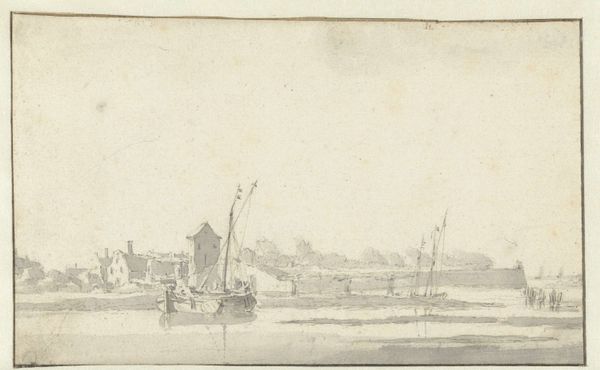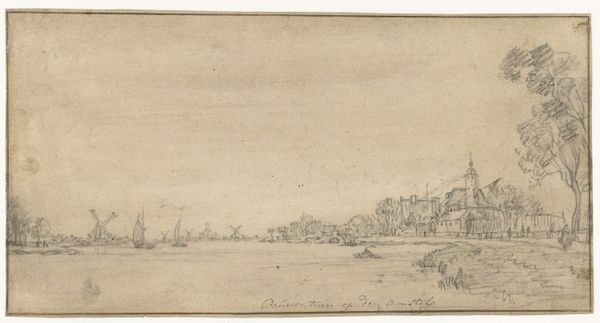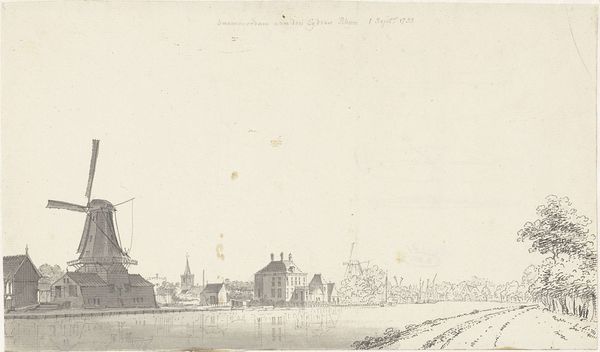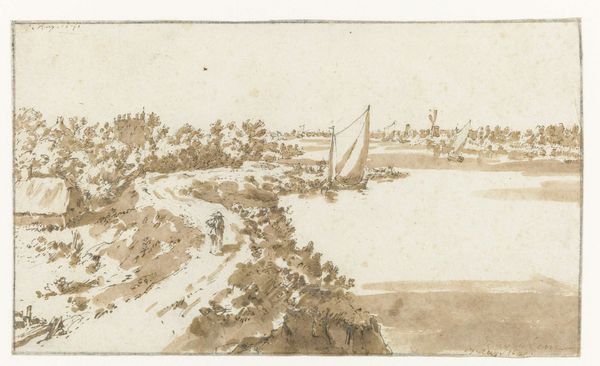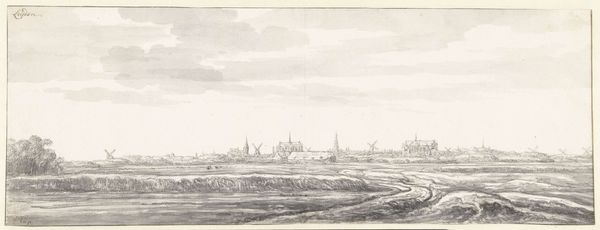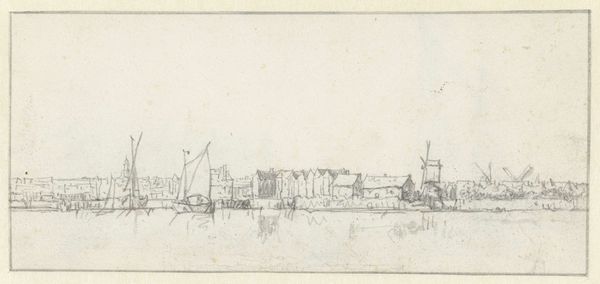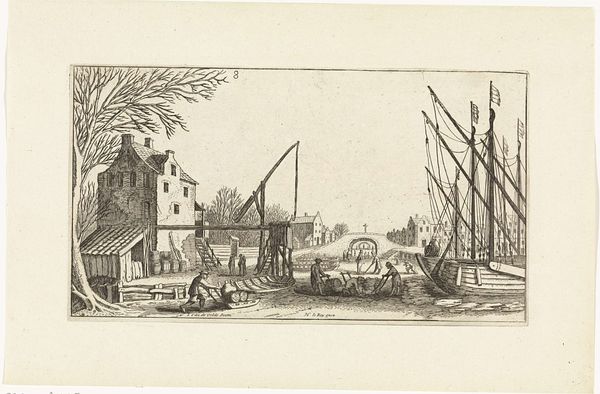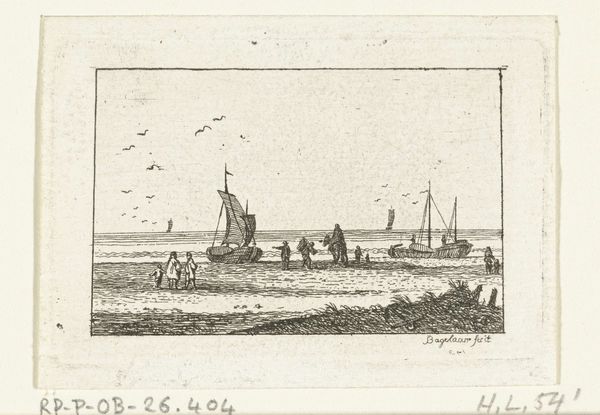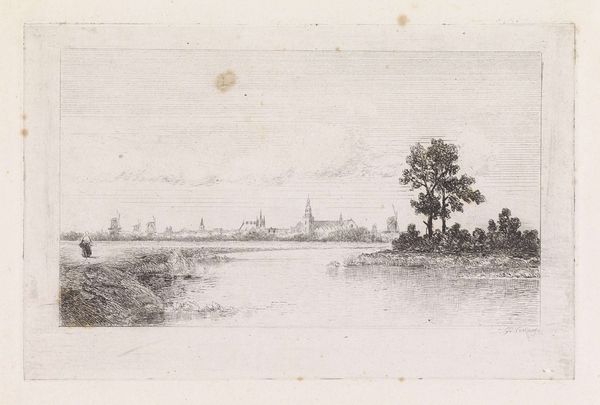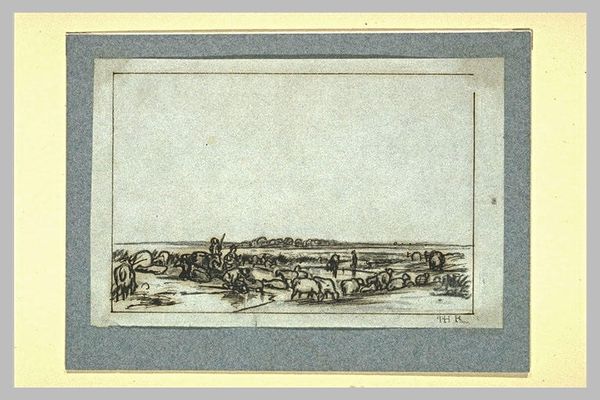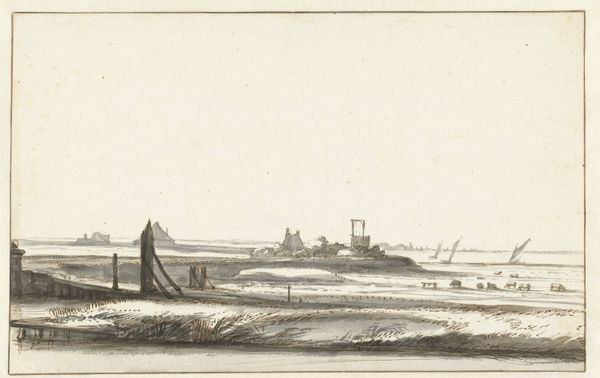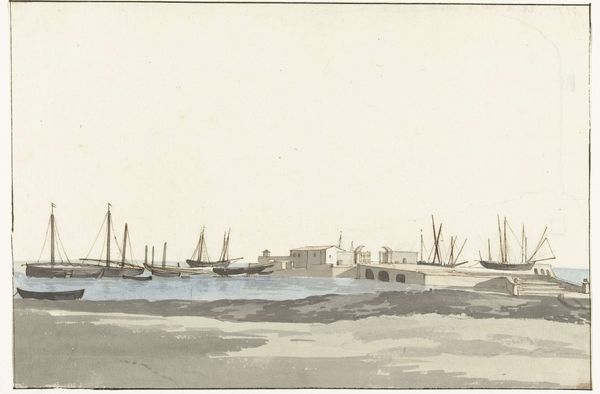
drawing, paper, ink
#
drawing
#
baroque
#
dutch-golden-age
#
landscape
#
paper
#
ink
#
cityscape
#
realism
Dimensions: height 92 mm, width 329 mm
Copyright: Rijks Museum: Open Domain
Editor: So, this is "View of Gorinchem and the Waterpoort" by Jan de Beijer, likely made between 1750 and 1758. It’s a drawing in ink on paper. The panoramic view creates a peaceful and somewhat sparse atmosphere. What stands out to you when you look at it? Curator: What intrigues me is how de Beijer’s choice of materials speaks to a specific socio-economic context. Ink and paper were relatively accessible. It wasn't oil paint for wealthy patrons, but an engagement with a burgeoning merchant class who desired a visual record of their towns and waterways. Notice the emphasis on the Waterpoort – a crucial node for trade and transportation. Editor: That's an interesting point. I hadn’t considered the material’s accessibility as a reflection of the intended audience and its function as documentation. How does that relate to the almost photo-realistic detail? Curator: The meticulousness in depicting the Waterpoort, the windmills, and even the distant skyline served a very practical purpose. This level of detail suggests a demand for accuracy, perhaps for cartographical reasons or for wealthy merchants who desired detailed images of their ports. These images aided in maritime shipping as trade and transport increased throughout Europe. Editor: So you're suggesting this drawing transcends purely aesthetic concerns and becomes a record of labour and infrastructure? The emphasis shifts from the artist's genius to the realities of the people whose labour supported that port? Curator: Precisely. Consider also the labour involved in producing this image – the precise hand movements, the time invested. De Beijer becomes an artisan capturing a specific moment in the development of Gorinchem as a center for trade. Editor: I hadn't thought of the role of art and labor in this way before. Thanks for enlightening me. I see now that the materials and the subject speak volumes about trade and development. Curator: Absolutely! And seeing art through this materialist lens helps us deconstruct assumptions about high art and craft, encouraging us to ask whose labor is valorized and why.
Comments
No comments
Be the first to comment and join the conversation on the ultimate creative platform.
